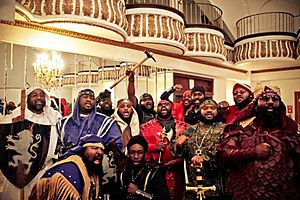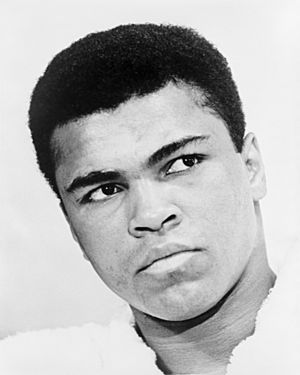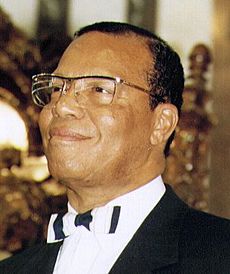African American–Jewish relations facts for kids
African Americans and Jewish Americans have a long history of working together and sometimes having disagreements in the United States. Since the 1970s, many people have studied this relationship. They cooperated a lot during the Civil Rights Movement, which led to important laws like the Civil Rights Act of 1964.
However, there have also been conflicts. These include disagreements about the Black Power movement, Zionism (support for a Jewish homeland), and affirmative action. Some false claims about Jews being involved in the Atlantic slave trade have also caused problems.
Contents
- Early History and Connections
- Business Relationships
- Entertainment Industry
- Working for Civil Rights
- Black Power Movement
- Black Hebrew Israelites
- Labor Movement
- Views on Zionism
- Affirmative Action
- Anti-Jewish Feelings Among Black Americans
- False Claims About Jews and the Slave Trade
- Anti-Black Racism Among Jews
Early History and Connections
During the early days of the United States, Jewish immigrants, often merchants from London, settled in cities like Providence, Charleston, and Savannah. They slowly became part of society. Some Jews owned slaves, which was common at the time. Historian Eli Faber says that while some Jews were involved, their role was very small compared to others. He notes that many groups, including Arabs, Europeans, and Africans, profited from the slave trade.
In the late 1800s and early 1900s, millions of Ashkenazi Jews came to the U.S. from Germany and Eastern Europe. They were looking for better lives and escaping violence in their home countries. They mostly settled in big cities in the Northeast and Midwest, like New York City, Chicago, and Philadelphia. These cities needed workers for their factories. At the same time, many Black people were moving from the rural South to these same Northern cities in the Great Migration. This meant Jews and Black people met more often in cities than in the South.
Jewish newspapers in the early 1900s often compared the journey of Black people from the South to the Jews' escape from Egypt. They pointed out that both groups lived in separate areas and called anti-Black violence "pogroms" (violent attacks against Jews). Jewish leaders wanted America to be a place where everyone could succeed, no matter their religion or background. Groups like the American Jewish Committee and the Anti-Defamation League worked hard against racism. Jews also gave a lot of money to civil rights groups like the NAACP and the Urban League. Many white civil rights lawyers in the South during the 1960s were Jewish.
Marcus Garvey (1887–1940) was an early leader who promoted pan-Africanism, which means celebrating Africa as the homeland for Black Americans. He led the Universal Negro Improvement Association and African Communities League. Many Jews saw Garvey as similar to leaders of Zionism, who wanted a Jewish homeland. For example, Garvey wanted former German colonies in Africa to be given to Black people. At the same time, Garvey sometimes criticized Jews in his newspaper, Negro World.
The lynching of Leo Frank, a Jewish man, in Georgia in 1915, made many Jews think about how similar and different they were from Black people. Some felt more connected to Black people because the trial showed a lot of anti-Jewish feelings in Georgia. However, the trial also caused tension because Frank's lawyers suggested a Black janitor was guilty.
In the early 1900s, Jewish newspapers often wrote about violence against Black people. They compared it to the violence Jews faced in the Russian Empire. Jewish leaders used their time, influence, and money to support Black causes. They helped with civil rights, charity, and community work. Historian Hasia Diner notes they made sure their actions were known to show growing Jewish political power.
Julius Rosenwald was a Jewish giver who donated much of his money to help educate Black children in the South. He provided funds to build schools in rural areas. Jews also played a big part in the National Association for the Advancement of Colored People (NAACP) for many years. Important Jewish figures in the NAACP included Joel Elias Spingarn, Arthur B. Spingarn, and Henry Moskowitz. Later, Jack Greenberg was also a leader.
Business Relationships
After the Civil War, Jewish shop owners and landlords often did business with Black customers and tenants. They filled a need where other white business owners would not. This was true in the South and in northern cities like New York. Jewish shop owners often treated Black customers with more respect than other white business owners. Black people often had more direct contact with Jews than with other white people.
In 1903, Black historian W. E. B. Du Bois wrote that Jews in the South became like the old slave owners. He saw them taking over businesses and lands.
Black writer James Baldwin (1924–1987) grew up in Harlem. He wrote that his landlords were Jewish, and people hated them because they were bad landlords. He also mentioned Jewish grocery store owners and butchers, saying they charged more for bad meat. He felt that the pawnbroker, also Jewish, was hated the most.
However, Baldwin also wrote more kindly about Jews. He said that the first white man he saw was a Jewish manager collecting rent. He knew that the real owners of the buildings were not Jewish. He also said that the Jewish grocer and druggist were very kind to him. He felt that the people trying to harm him were not Jewish.
Martin Luther King Jr. thought that some anti-Jewish feelings among Black people came from problems with landlords and tenants. He gave an example from Chicago where Black tenants paid more for bad apartments owned by Jews. He said Black people often paid a "color tax," meaning they paid more because of their race. This led to bad feelings when Black people faced Jewish landlords or shopkeepers.
Entertainment Industry
Jewish producers in the U.S. entertainment industry made many movies, plays, and songs about Black people. Many of these showed Black people in a good light. However, historian Michael Rogin said some of these portrayals could be seen as using Black culture for profit.
Rogin also looked at times when Jewish actors, like Al Jolson, dressed up as Black people in "Blackface" performances. He said these were racist but also reflected the culture of the time. Black people could not play leading roles in theater or movies back then. Rogin felt that Jewish blackface did not mean Jews were uniquely racist, nor did it cause unique anti-Jewish feelings among Black people.
Jews often interpreted Black culture in their art. Historian Jeffrey Melnick said that Jewish artists like Irving Berlin and George Gershwin (who wrote Porgy and Bess) created a belief that they were the best at understanding Black culture. He felt they pushed out "real" Black American artists. Melnick concluded that even though Black musicians and critics said Jews helped Black culture become popular, the main benefits went to the Jewish artists.
Black academic Harold Cruse believed the arts scene was controlled by white people and did not truly show Black culture. He used George Gershwin's opera Porgy and Bess as an example.
Some Black people have criticized Jewish movie producers for showing Black people in a racist way. In 1990, Legrand Clegg, who fought against negative images of Black Americans in movies, said that Jewish racism in Hollywood kept Black people from powerful jobs and showed them badly. He felt that if Jewish leaders could complain about anti-Jewish feelings from Black people, then Black leaders should talk about Jewish racism in Hollywood.
Professor Leonard Jeffries made similar comments in 1991. He said Jews controlled the film industry and used it to create bad stereotypes of Black people.
Working for Civil Rights
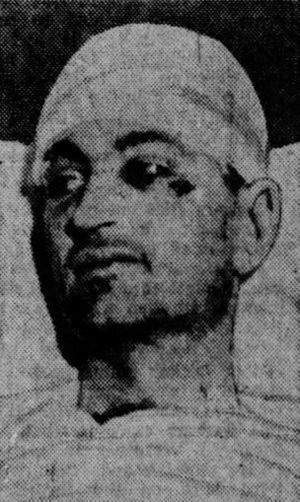
A strike in 1934 where several Black miners were killed led physicist Joseph Gelders to become active in civil rights. Gelders and his wife started a discussion group for students. He also worked on the Scottsboro Boys case. Because of his work, Gelders was kidnapped and attacked by members of the Ku Klux Klan in 1936. Gelders and Lucy Randolph Mason later started the Southern Conference for Human Welfare in 1938. In 1941, Gelders and Virginia Foster Durr helped create the National Committee to Abolish the Poll Tax.
Cooperation between Jewish and African-American groups was strongest after World War II. This time is sometimes called the "golden age" of their relationship. Leaders from both groups worked together for racial equality in the U.S. Jews also helped fund and lead some national civil rights groups. Black civil rights leader W. E. B. Du Bois wrote articles in Jewish newspapers speaking out against Nazi violence in Europe after visiting the Warsaw Ghetto. Historically, Black colleges also hired Jewish professors who were refugees and could not find jobs in white schools due to anti-Jewish feelings in America. This period of cooperation led to the Civil Rights Act of 1964, which made racial or religious discrimination illegal. It also led to the Voting Rights Act of 1965, which stopped unfair voting practices.
Historian Greenberg notes that many white civil rights activists were Jewish. Jewish groups worked with African American groups more deeply than other white groups. This was because their members and their understanding of Jewish values pushed them to do so.
Jewish people's involvement in the civil rights movement often depended on their type of Judaism. Reform Jews participated more often than Orthodox Jews. Many Reform Jews were guided by their beliefs to work for justice and solve problems in society.
Religious leaders, like rabbis and Baptist ministers, were key figures. Abraham Joshua Heschel, a rabbi, marched with Martin Luther King Jr. during the Selma to Montgomery marches. Years later, groups like the King Center for Nonviolent Social Change and the American Jewish Committee marched together to remember this moment. Sixteen Jewish leaders were arrested in St. Augustine, Florida, in 1964 while marching with King. This was the largest arrest of rabbis in American history. Marc Schneier wrote Shared Dreams: Martin Luther King Jr. and the Jewish Community (1999) to highlight the strong past relationship and encourage new ties after conflicts like the Crown Heights riot.
Jews in the North and West often supported desegregation in their communities and schools. They did this even if it meant changing their close-knit Jewish communities.
Was it a "Golden Age"?
Some recent studies suggest that the "golden age" (1955–1966) of the Black–Jewish relationship was not as perfect as it seems.
Philosopher Cornel West says there was never a time without tension between Black people and Jews. West believes Black people often downplay this period, while Jews tend to see it as more perfect. He says Black people focus on how quickly many Jews became middle or upper-class, which caused some resentment among poor Black people. Jews, he says, romanticize it because their current success makes them feel less like the "underdogs" they used to be.
Historian Melanie Kaye/Kantrowitz points out that only a few hundred non-Southern Jews went to the Southern states. She also says the relationship was often out of touch, with both sides not fully understanding each other.
Political scientist Andrew Hacker noted that white people who went South in 1964 called it their "Mississippi summer." He felt this made it seem like the efforts of local Black people did not exist until white help arrived. He saw this as a bit condescending. Hacker also pointed out that for Jewish liberals, the main memory of that summer was the deaths of Andrew Goodman and Michael Schwerner, with James Chaney's name often listed last.
Southern Jews and Civil Rights
Most civil rights work by American Jews was done by Jews from the North and West. Jews from the Southern states did very little organized civil rights activity. This puzzled some Northern Jews. They did not realize that Jews in the South were generally not victims of the racial system. In fact, the system often placed Jews in a better position, making them seem "white." However, some individual Southern Jews did take part in civil rights.
Rabbi Jacob Rothschild was a rabbi in Atlanta from 1946 until his death in 1973. He was a strong supporter of civil rights. When he arrived in Atlanta, he was upset by the unfairness he saw. He decided to make civil rights a main focus of his work. He first spoke about it in 1947 but was careful not to upset his supporters. By 1954, when the Supreme Court ordered schools to desegregate, race relations were a regular topic in his sermons. His community became used to his support for civil rights.
He also worked with Christian clergy and joined groups like the Atlanta Council on Human Relations. He started an annual event for Christian clergy to promote cooperation. Black ministers were always welcome, and Rothschild invited Black leaders to speak at his Temple, even when some members disagreed.
In 1957, when other Southern cities were fighting school desegregation, eighty Atlanta ministers called for peace and obedience to the law. Rabbi Rothschild helped write this statement. He supported it in newspaper articles that were even published in the Congressional Record.
While some admired Rothschild's work, others hated it. In 1958, fifty sticks of dynamite exploded at his Temple. Many believed it was because of his strong support for civil rights. However, this bombing led to a rejection of extremism and a renewed commitment to racial peace in Atlanta.
Instead of stopping, Rothschild became even more active after the bombing. He spoke often about civil rights and became vice president of the Atlanta Council on Human Relations. Members of his community also took leadership roles in groups that helped ensure peaceful school integration in Atlanta in 1961.
During this time, Rothschild became close friends with Martin Luther King Jr.. After King won the Nobel Peace Prize in 1964, Rothschild helped organize a banquet in his honor and was the master of ceremonies. After King's death in 1968, Rothschild gave the eulogy at a memorial service.
In later years, Rothschild disagreed with some of the more aggressive actions of younger Black activists. This caused him to lose some support from his Black civil rights partners. Despite this, Rothschild continued to speak about social justice until he died in 1973.
In recent decades, more Southern Jews have spoken out on civil rights issues, like during the 1987 marches in Forsyth County, Georgia.
Black Power Movement
Starting in 1966, the cooperation between Jews and Black people began to weaken. Jews were becoming more middle and upper-class, which created a distance. At the same time, many Black leaders, including those from the Black Power movement, spoke out more strongly for equality. They often criticized Jews along with other white groups.
In 1966, the Student Nonviolent Coordinating Committee (SNCC) voted to remove white people from its leadership. This led to several Jewish leaders being expelled.
In 1967, Black academic Harold Cruse criticized Jewish activism in his book The Crisis of the Negro Intellectual. He argued that Jews had become a problem for Black people because they had identified so much with the Black struggle. Cruse believed that Jewish involvement in politics between races stopped Black Americans from developing their own identity. He felt that Black people themselves needed to end the role of American Jews as political go-betweens.
Black Hebrew Israelites
Black Hebrew Israelites are groups of people, mostly of Black American background, who believe they are descendants of the ancient Israelites. They are mainly found in the Americas. These groups follow some religious beliefs and practices from both mainstream Judaism and Christianity, but their teachings mostly come from Christian sources. Most Orthodox and Conservative Jews, and the wider Jewish community, do not accept them as Jews. This is because their beliefs are very different from mainstream Judaism, and they often show hostility towards traditionally recognized Jews.
Many Black Hebrews believe they, not Jews, are the true descendants of the ancient Israelites. They claim that Jews are simply fakes. Some groups call themselves Hebrew Israelites, others Black Hebrews, and some identify as Jews. Dozens of Black Hebrew groups started in the U.S. in the late 1800s and early 1900s.
In 2003, 1200 Black Hebrew Israelites were found to be able to become Israeli citizens. Members of the community started moving to Israel as early as 1992. In April 2021, Israel announced plans to deport dozens of African Hebrews, even though many had received permanent residency. 51 members were told to leave their homes by September 23, 2021. However, in October 2021, a court order stopped these deportations for a while.
Labor Movement
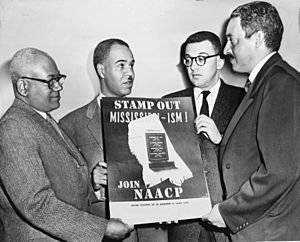
The labor movement was another area where Black people and Jews worked well together before World War II, but then faced conflict. In the early 1900s, they cooperated to try and get more minority leaders in the United Automobile Workers (UAW) union. In 1943, Jews and Black people asked for a new department within the UAW for minorities, but this was denied.
After World War II, the Jewish Labor Committee (JLC), formed in 1934 to fight against the rise of Nazism, created about two dozen local groups to fight racism in the U.S. and Canada. The JLC helped start the United Farm Workers and supported the 1963 March on Washington for Jobs and Freedom led by Martin Luther King Jr..
However, starting in 1962, Herbert Hill, the labor director for the NAACP, claimed that the JLC had defended unions that discriminated against Black people since the 1940s. He said the JLC turned a "Black-white conflict into a Black-Jewish conflict." He accused the JLC of defending Jewish leaders of the International Ladies' Garment Workers' Union (ILGWU) against charges of racism. He also claimed they hid information and called Black members who complained "antisemites."
The New York City teachers' strike of 1968 also showed the decline in Black-Jewish relations. The Jewish president of the United Federation of Teachers, Albert Shanker, made statements that some saw as accusing Black teachers of anti-Jewish feelings.
Views on Zionism
After Israel took control of the West Bank and Gaza in the 1967 Six-Day War, some Black Americans supported the Palestinians and criticized Israel's actions. For example, they publicly supported Palestinian leader Yasser Arafat. Some, like Muhammad Ali and Malcolm X, also criticized the Zionist movement.
Right after the war, the newsletter of the Student Nonviolent Coordinating Committee (SNCC) published an article criticizing Israel. It claimed that during the 1948 Arab–Israeli War, "Zionists took Arab homes and land through terror and massacres." This article caused conflict between Jews and the SNCC. Black SNCC leaders saw the war as a way to show their break from their civil rights past.
Black concerns continued. In 1993, philosopher Cornel West wrote in Race Matters: "Jews will not understand what the situation of Palestinians in Israel means to Blacks.... Blacks often see the Jewish defense of Israel as just looking out for their own group, and not thinking about what is morally right."
Support for Palestinians often comes from seeing them as people of color. Andrew Hacker wrote: "The presence of Israel in the Middle East is seen as stopping people of color from having their rightful place. Some Blacks view Israel as a white and European power, supported from outside, taking land that belongs to the original people of Palestine." Martin Luther King Jr. disagreed with this view. He said that the opinions of some "young militants" did not represent most Black people. He noted that some people were too focused on race and condemned anything not "colored."
Affirmative Action
Many Black people have supported government and business programs called affirmative action. These programs aim to help groups that have faced discrimination. However, many Jews have not supported these programs, preferring systems based on merit (who is most qualified). Historians believe this difference helped end the Black-Jewish alliance in the 1970s. At that time, Black people were looking for ways to build on the civil rights laws of the 1960s. As Black people still faced widespread discrimination, they became more determined. Greenberg believes this caused more resentment and fear among Jews.
Herbert Hill's study of affirmative action lawsuits found that Jewish organizations generally opposed these programs. A well-known example of Black-Jewish conflict happened in the 1978 affirmative action case of Regents of the University of California v. Bakke. In this case, Black and Jewish organizations took opposite sides. A white student sued, saying he was unfairly kept out of a program because of affirmative action.
Anti-Jewish Feelings Among Black Americans
Some Black community leaders have made anti-Jewish comments. These comments reflect anti-Jewish opinions held by some Black people. They accuse Jews of being too aggressive in business, being more loyal to Israel than the U.S., being involved in the slave trade, and causing economic hardship. Some experts say these anti-Jewish feelings come from resentment or envy towards another group that has succeeded in America.
In 1935, during the Great Depression, Black activist Sufi Abdul Hamid led boycotts against some businesses in Harlem. These businesses, often owned by Jews, were accused of discriminating against Black people. Some Jews called him anti-Jewish for these actions.
In 1984, presidential candidate Jesse Jackson and former United Nations ambassador Andrew Young made anti-Jewish comments that were widely reported. These remarks were thought to have made the distrust between African Americans and Jews worse in the 1980s.
In 1991 in Brooklyn, a Black crowd involved in the Crown Heights riot killed Yankel Rosenbaum, an Orthodox Jew. This happened after a car driven by a Jew hit and killed a Black boy. Some people believed the unrest was related to anti-Jewish feelings. The two groups live very close to each other in this area, and the Orthodox Jewish community has been growing.
In the 1990s, anti-Jewish feelings became common in Black communities on college campuses. Some accused Jews of being involved in the slave trade, claiming they controlled it. Professor Leonard Jeffries of the City College of New York supported this idea. However, major Black American historians of the slave trade, like David Brion Davis, have disagreed with his conclusions.
Surveys started in 1964 by the Anti-Defamation League, a Jewish organization, show that African Americans are more likely to hold anti-Jewish beliefs than white Americans. People with higher education levels are less likely to believe anti-Jewish stereotypes, regardless of race. However, Black Americans at all education levels are still more likely to have anti-Jewish feelings than white people with the same education.
In a 1998 survey, 34% of Black people were in the most anti-Jewish group (agreeing with at least 6 out of 11 anti-Jewish statements), compared to 9% of white people. Among Black people without a college education, 43% were in the most anti-Jewish group. This number dropped to 27% for Black people with some college and 18% for those with a four-year degree.
Nation of Islam
The Nation of Islam, a Black religious and political group, made several anti-Jewish statements in the late 1900s. The group's founder, Elijah Muhammad, targeted white people in general. He also said that white people, including Jews, were "devils" and involved in racism against Black people. However, he did not see Jews as more corrupt than other white people.
In 1993, Nation of Islam spokesperson Khalid Abdul Muhammad publicly called Jews "bloodsuckers." This led to widespread public criticism. The current leader of the Nation of Islam, Louis Farrakhan, has made several comments that the Anti-Defamation League and others consider anti-Jewish. He is said to have called Judaism a "dirty religion" and Adolf Hitler a "very great man." Farrakhan denied these claims, but a tape obtained by The New York Times supports that he did praise Hitler.
Elijah Muhammad claimed that Black people, not white people or European Jews, were the chosen people. Louis Farrakhan has also made this claim. In a 1985 speech, Farrakhan said, "I have a problem with Jews... because I am declaring to the world that they are not the chosen people of God.... You, the black people of America and the Western Hemisphere [are]."
False Claims About Jews and the Slave Trade
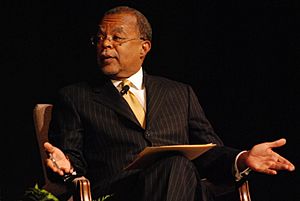
While there were not many Jews in the Antebellum South (before the Civil War), about 75% of them owned slaves. Because most Jews in the South lived in cities, most of these slaves were house slaves.
In the 1990s, much of the conflict between Jews and Black people focused on claims that Jews were heavily involved in the Atlantic slave trade. Professor Leonard Jeffries stated in a 1991 speech that "rich Jews" funded the slave trade. He mentioned the role of Jews in slave-trading centers like Rhode Island, Brazil, the Caribbean, Curaçao, and Amsterdam. His comments caused widespread anger and calls for him to be fired.
Jeffries used The Secret Relationship Between Blacks and Jews (1991), published by the Nation of Islam, as a source. That book claimed Jews played a major role in the African slave trade, which caused a lot of debate. Many scholars published works to disprove these claims. Mainstream historians of slavery, like David Brion Davis, concluded that Jews had little major or lasting impact on slavery in the New World. Historian Wim Kooster notes that "Jews never played a leading role as financiers, shipowners, or traders in the transatlantic or Caribbean slave trades." He added that they owned far fewer slaves than non-Jews in every British territory in North America and the Caribbean.
Tony Martin of Wellesley College included The Secret Relationship between Blacks and Jews on his class reading list, leading to accusations of anti-Jewish feelings against him in 1993.
Henry Louis Gates Jr. of Harvard University called the book "the bible of new anti-Semitism." He said the book "massively misinterprets the historical record" by using quotes in a misleading way.
Anti-Black Racism Among Jews
Jewish slave ownership practices in the Southern United States followed local customs, not Jewish law. Many Southern Jews believed that Black people were less than human and suited for slavery. This was a common belief among their non-Jewish Southern neighbors. Jews followed the common patterns of slave ownership in the South. Wealthy Jewish families in the American South generally preferred hiring white servants over owning slaves. Jewish slave owners included Aaron Lopez, Francis Salvador, Judah Touro, and Haym Salomon. Most Jewish slave ownership was in cities, for businesses or as domestic servants, not on large farms. Jewish slave owners freed their Black slaves at about the same rate as non-Jewish slave owners. Sometimes, Jewish slave owners left slaves to their children in their wills.
The other side of anti-Jewish feelings among Black people is anti-Black racism among Jews. Some Black customers and tenants felt that Jewish shopkeepers and landlords treated them unfairly because of racism. Hacker quoted James Baldwin's comments about Jewish shopkeepers in Harlem to support this claim of racism.
In the early 1970s, Atlanta's first Jewish mayor, Sam Massell, used clear anti-Black language when running for re-election against the city's first Black mayoral candidate, Maynard Jackson. As a result, many progressive white people in the city, including Atlanta's largest daily newspaper, publicly supported Jackson. This caused Massell to lose the election.
Hacker also quoted author Julius Lester, a Black American who converted to Judaism. Lester wrote: "Jews tend to be a little self-righteous about their liberal record... we realize that they were pitying us and wanted our gratitude, not true justice and humanity... Black people consider [Jews] to be like a parent treating a child. Black people have ended the old relationship they had with the Jewish community, where we were treated with a kind of kindness that was really just a gentle form of racism."
In his 1992 essay "Blacks and Jews: The Uncivil War," historian Taylor Branch stated that Jews had been "perpetrators of racial hate." He noted that 3,000 members of the African Hebrew Israelites of Jerusalem, founded in 1966 in Chicago, were denied citizenship as Jews when they moved to Israel. These Americans claimed they had the right to citizenship as Jews under the Israeli Law of Return. Under this law, only people born Jewish (with a Jewish mother or maternal grandmother), those with Jewish ancestry (Jewish father or grandfather), and people who convert to Orthodox, Reform, or Conservative Judaism are recognized as Jews.
Branch believed that the rejection of the Chicago group was based on anti-Black feelings among Israeli Jews. However, Seth Forman criticized Branch, saying his claims seemed baseless. He pointed out that Israel had airlifted thousands of Ethiopian Jews to Israel in the early 1990s. A group of American civil rights activists led by Bayard Rustin investigated the 1966 case. They concluded that racism was not the reason the Black Hebrews were rejected in Israel. They were seen as a cult rather than a group of historical Jewish descendants.
|


